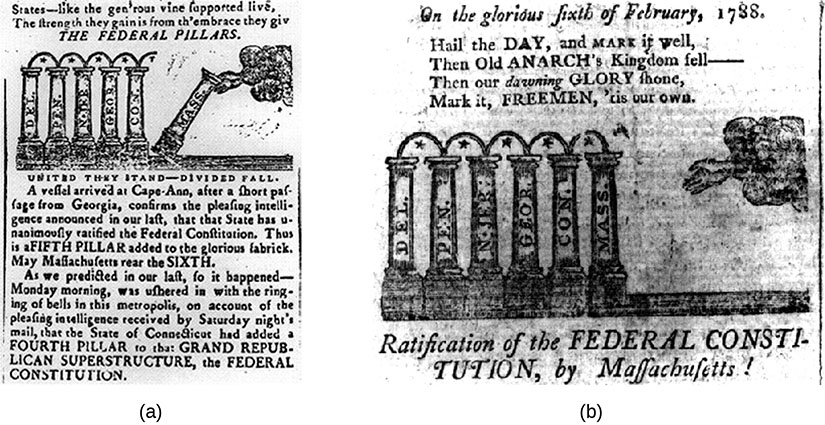| << Chapter < Page | Chapter >> Page > |

For obvious reasons, smaller, less populous states favored the Constitution and the protection of a strong federal government. As shown in [link] , Delaware and New Jersey ratified the document within a few months after it was sent to them for approval in 1787. Connecticut ratified it early in 1788. Some of the larger states, such as Pennsylvania and Massachusetts, also voted in favor of the new government. New Hampshire became the ninth state to ratify the Constitution in the summer of 1788.

Although the Constitution went into effect following ratification by New Hampshire, four states still remained outside the newly formed union. Two were the wealthy, populous states of Virginia and New York. In Virginia, James Madison’s active support and the intercession of George Washington, who wrote letters to the convention, changed the minds of many. Some who had initially opposed the Constitution, such as Edmund Randolph, were persuaded that the creation of a strong union was necessary for the country’s survival and changed their position. Other Virginia delegates were swayed by the promise that a bill of rights similar to the Virginia Declaration of Rights would be added after the Constitution was ratified. On June 25, 1788, Virginia became the tenth state to grant its approval.
The approval of New York was the last major hurdle. Facing considerable opposition to the Constitution in that state, Alexander Hamilton , James Madison , and John Jay wrote a series of essays, beginning in 1787, arguing for a strong federal government and support of the Constitution ( [link] ). Later compiled as The Federalist and now known as The Federalist Papers , these eighty-five essays were originally published in newspapers in New York and other states under the name of Publius, a supporter of the Roman Republic.

The essays addressed a variety of issues that troubled citizens. For example, in Federalist No. 51, attributed to James Madison ( [link] ), the author assured readers they did not need to fear that the national government would grow too powerful. The federal system, in which power was divided between the national and state governments, and the division of authority within the federal government into separate branches would prevent any one part of the government from becoming too strong. Furthermore, tyranny could not arise in a government in which “the legislature necessarily predominates.” Finally, the desire of office holders in each branch of government to exercise the powers given to them, described as “personal motives,” would encourage them to limit any attempt by the other branches to overstep their authority. According to Madison , “Ambition must be made to counteract ambition.”

Notification Switch
Would you like to follow the 'American government' conversation and receive update notifications?